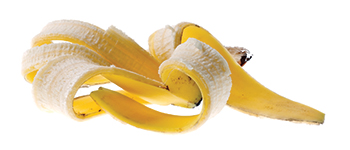When determining what type of waste collection system suits their businesses, foodservice operators can choose from a variety of options in terms of size and function. These systems can be as small as an under-sink garbage disposer or a big remote pulping system that includes a built-in grinder to send trash through pipes with water to create a sludge for disposal.
 Operations that typically wash 25 to 30 racks per hour generally designate a staff member to scrape dishes by hand, which tends to be a less costly option. Larger operations, such as universities and hospitals, look to create greater speed and efficiency for their dish room scrapping operations while decreasing labor in the process. For these operators, a waste collector helps prevent bottlenecks in the process caused by hand scraping.
Operations that typically wash 25 to 30 racks per hour generally designate a staff member to scrape dishes by hand, which tends to be a less costly option. Larger operations, such as universities and hospitals, look to create greater speed and efficiency for their dish room scrapping operations while decreasing labor in the process. For these operators, a waste collector helps prevent bottlenecks in the process caused by hand scraping.
Waste collectors serve as an alternative system to garbage disposers and pulping systems. Larger operations that use a door dishwasher to process 20 to 125 racks an hour or a conveyor dish machine to process 400 racks an hour typically use waste collectors to remove scraps from dishes prior to automated washing. Waste collectors can double or triple scrapping outputs without adding labor in the dish room and reduce food waste solids by 50 percent to 60 percent.
Potential benefits of these units include lower waste hauling fees due to less bulk waste and a reduced occurrence of odors and pests. The units can also help cut water use at prerinse stations as they use recirculated water and a built-in shut-off timer is available.
With these automated systems, dishwashers use both hands to scrape dishes under strong plumes of recirculated water, which runs over food waste. Larger debris collects in a sieve or basket that a staff member manually dumps. The remaining water-soluble waste is safely disposed down the drain.
Waste collectors come in standard, pot and pan, and trough versions. The only difference is the size and the number of operators needed to work the systems. All include a tank, controller and pump. Standard units are suitable for restaurants scrapping food waste at the pace of 50 to 100 racks per hour. These systems can fit under a standard sink. For more racks or to handle the volume for conveyor-type dishwashers, a pot and pan waste collector would be more suitable. This type has a larger mounting. This system is commonly used with three-compartment sinks or powered soaking systems and works well for scraping both dishes and cafeteria trays. For medium to large kitchens and bigger scrapping jobs that require multiple team members, a trough waste collector is best. This has a different setup in terms of the plumbing and is longer to accommodate trays and sheet pans. With this type, multiple team members scrape waste into a trough of recirculating water. Though the top mountings vary for each type, the trash collection baskets are identical.
Most waste collector units utilize built-in pumps; some only turn on when the tank is filled with the appropriate amount of water. These pumps circulate water at a rate of about 30 gallons per minute. Models are available with collector bins that soak dishes with dried or baked-on food. Some units include an overflow pipe that helps maintain water clarity by skimming the surface of wastewater. Larger units use technology that can sense when an operator is present to turn on and off automatically. This equipment also can be used in conjunction with compost programs.
Most waste collectors’ ¾-hp pumps run on 115-volt single-phase power, but units are available with 240-volt triple-phase power.
Optional accessories for these units include salvage bins, packages suitable for use in correctional operations, stainless-steel covers, trough diffusers, scrap baskets, bolt-down flanges and gusher head assemblies on trough units to prerinse compartmented trays.










